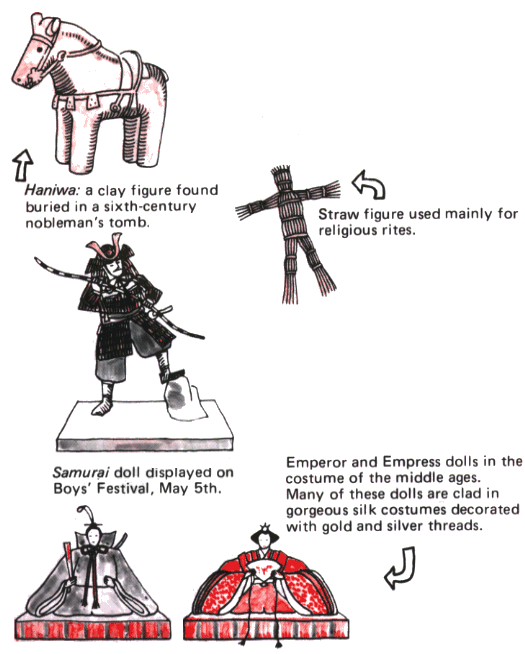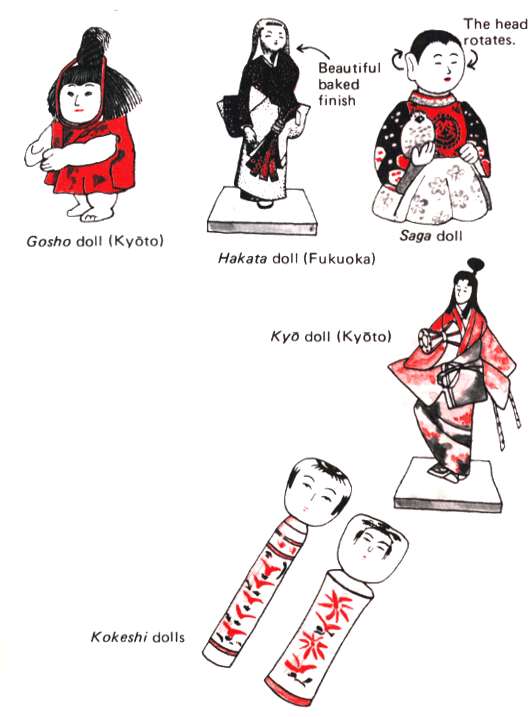

Japanese dolls, JNTO
“Japanese dolls (人形 ningyō, lit. “human form”) are one of the traditional Japanese crafts. There are various types of traditional dolls, some representing children and babies, some the imperial court, warriors and heroes, fairy-tale characters, gods and (rarely) demons, and also people of the daily life of Japanese cities. Many have a long tradition and are still made today, for household shrines, for formal gift-giving, or for festival celebrations such as Hinamatsuri, the doll festival, or Kodomo no Hi, Children’s Day. Some are manufactured as a local craft, to be purchased by pilgrims as a souvenir of a temple visit or some other trip”. (source: Wiki)
“The Haniwa (埴輪) are terracotta clay figures that were made for ritual use and buried with the dead as funerary objects during the Kofun period (3rd to 6th centuries AD) of the history of Japan”. (source: Wiki)

Japanese dolls, JNTO
“Hina dolls are the dolls for Hinamatsuri, the doll festival on March 3. They can be made of many materials but the classic hina doll has a pyramidal body of elaborate, many-layered textiles stuffed with straw and/or wood blocks, carved wood hands (and in some cases feet) covered with gofun, and a head of carved wood or molded wood compo covered with gofun, with set-in glass eyes (though before about 1850 the eyes were carved into the gofun and painted) and human or silk hair. A full set comprises at least 15 dolls, representing specific characters, with many accessories (dogu), though the basic set is a male-female pair, often referred to as the Emperor and Empress”. (source: Wiki)
“Gosho dolls show fat, cute babies in a simplified form. The basic gosho is an almost-naked sitting boy, carved all in one piece, with very white skin, though gosho with elaborate clothing, hairstyle, and accessories, female as well as male, became popular as well. They developed as gifts associated with the Imperial court, and “gosho” could be translated “palace” or “court.” (source: Wiki)
“Kokeshi dolls have been made for 150 years, and are from Northern Honshū, the main island of Japan. They were originally made as toys for children of farmers. They have no arms or legs, but a large head and cylindrical body, representing little girls. From a simple toy, it has now become a famous Japanese craft, and now an established souvenir for tourists”. (source: Wiki)
Reference
Contact us : info@mai-ko.com
